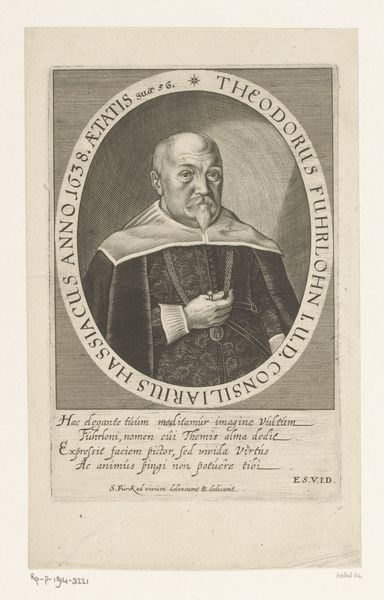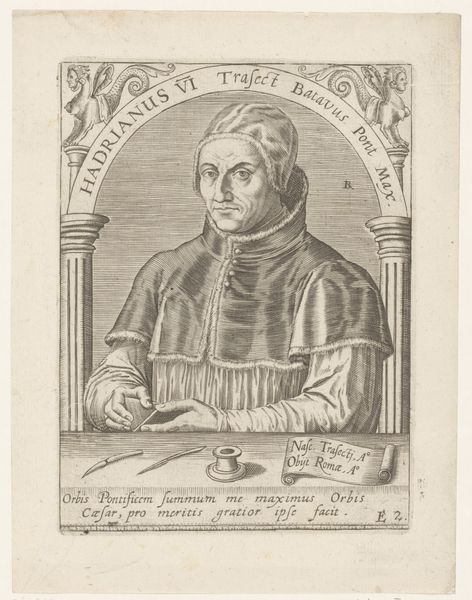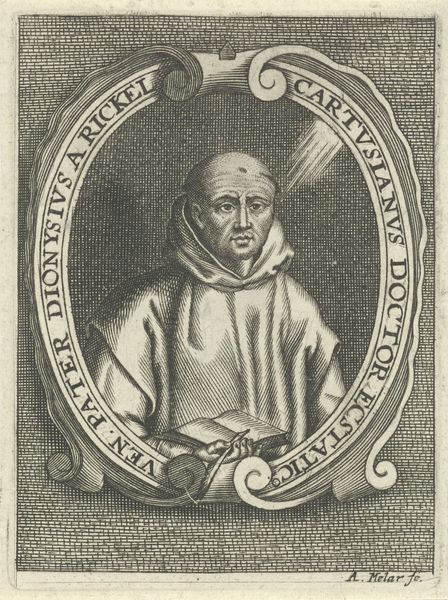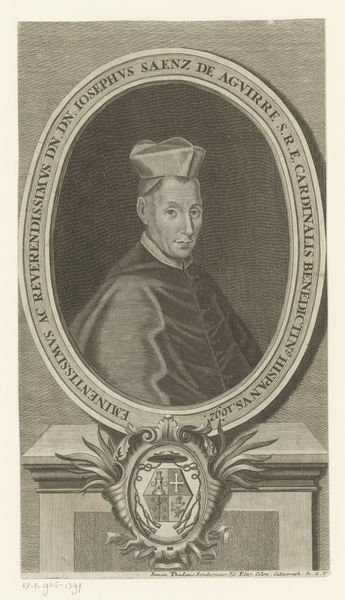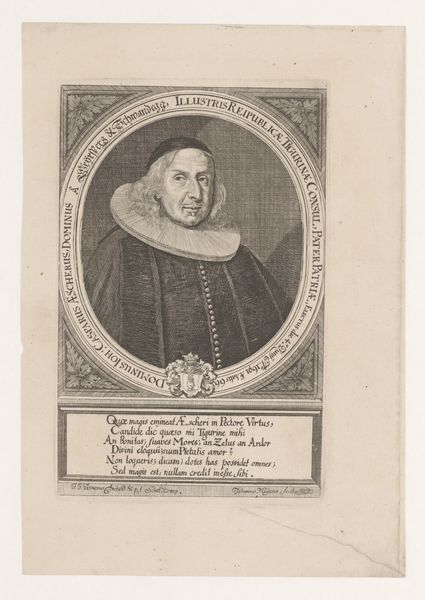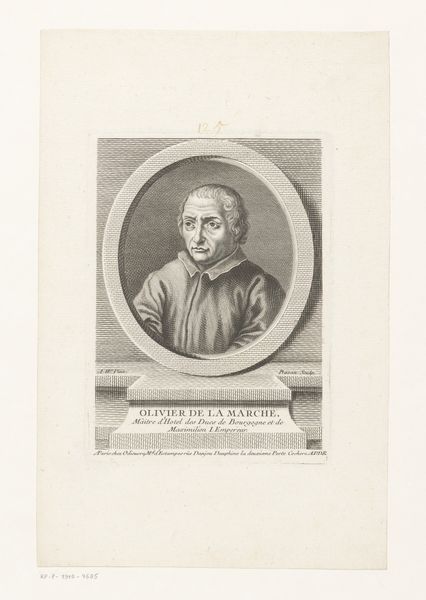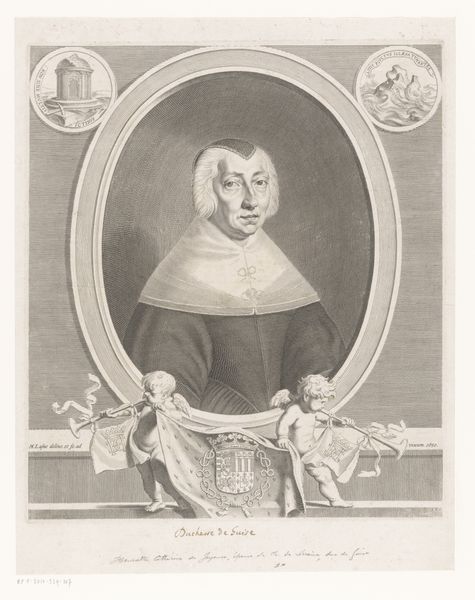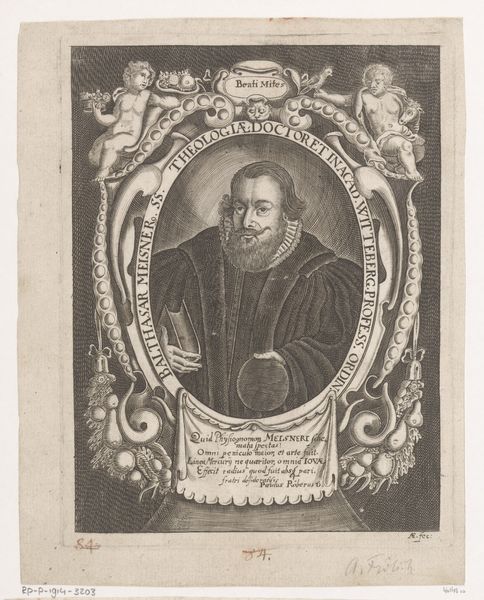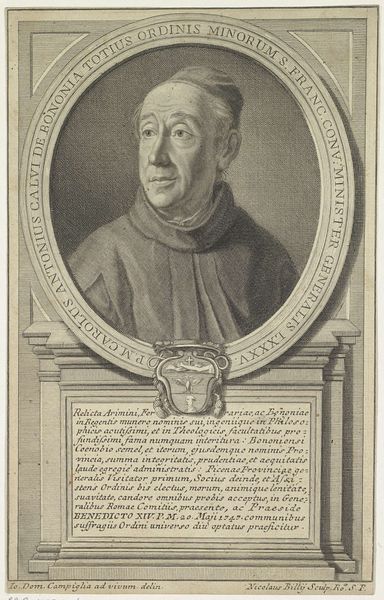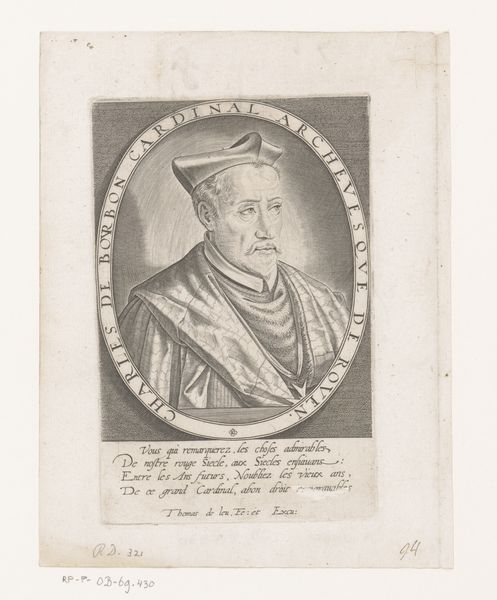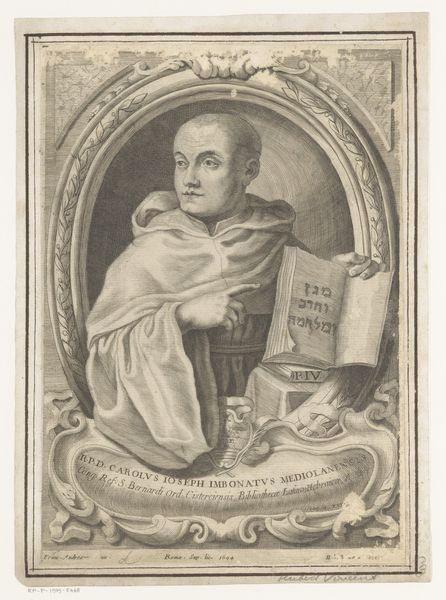
engraving
#
portrait
#
baroque
#
old engraving style
#
caricature
#
line
#
history-painting
#
engraving
Dimensions: height 145 mm, width 88 mm
Copyright: Rijks Museum: Open Domain
Curator: This engraving presents a portrait of Francesco Fulvio Frugoni, a theologian and writer, created sometime between 1654 and 1734. Isabella Piccini is credited as the artist behind this work. Editor: My first impression? It’s rather severe. There's an almost haunting quality to the way Frugoni’s eyes bore into the viewer, all amplified by the stark lines of the engraving. Curator: I think the severity is an intentional reflection of Frugoni's persona and the social climate surrounding theological discourse. It highlights the weighty intellectualism expected of someone in his position during the period. The inscription "IN OMNI PATIENTIA ET DOCTRINA PROBAT" framed around the portrait reinforces a very stoic vision. Editor: That's a keen observation. I’m also struck by the contrast between the rigidity of the central portrait versus the almost dreamlike vignettes above. There’s a symbolic interplay, maybe? Birds soaring towards a shining sun, light chasing darkness… could speak to enlightenment, or religious inspiration. Curator: Absolutely! These are potent symbols representing spiritual awakening and the triumph of knowledge over ignorance. Within the historical context, especially considering the social pressures within religious circles, those symbolic narratives may serve a legitimizing function. Editor: What about the banner beneath the portrait, with its Latin inscription? How does that contribute to our understanding of Frugoni? Curator: It reads: "Frons docet, arguit obrut? pia quosq, reforma/ Mores è Minimis Maximi imago Viri." This elaborates the overall message of how one should think of him; essentially he wishes to express here that he wants to appear capable in intelligence and virtue in everything he is committed to do. The fact that it is on a banner implies a call to all people to do likewise, too, and suggests it serves as a message of self-legitimization to quell public disapproval. Editor: The piece prompts contemplation not just on the individual, but the weight of representation and how power can shape one's narrative. Thanks, Isabella, for presenting us this complex and thought-provoking individual. Curator: Precisely, these visual components add to the image’s depth, creating layers of meaning tied to Frugoni's place within intellectual society. They challenge us to examine the dynamics of representation and historical perspective.
Comments
No comments
Be the first to comment and join the conversation on the ultimate creative platform.


